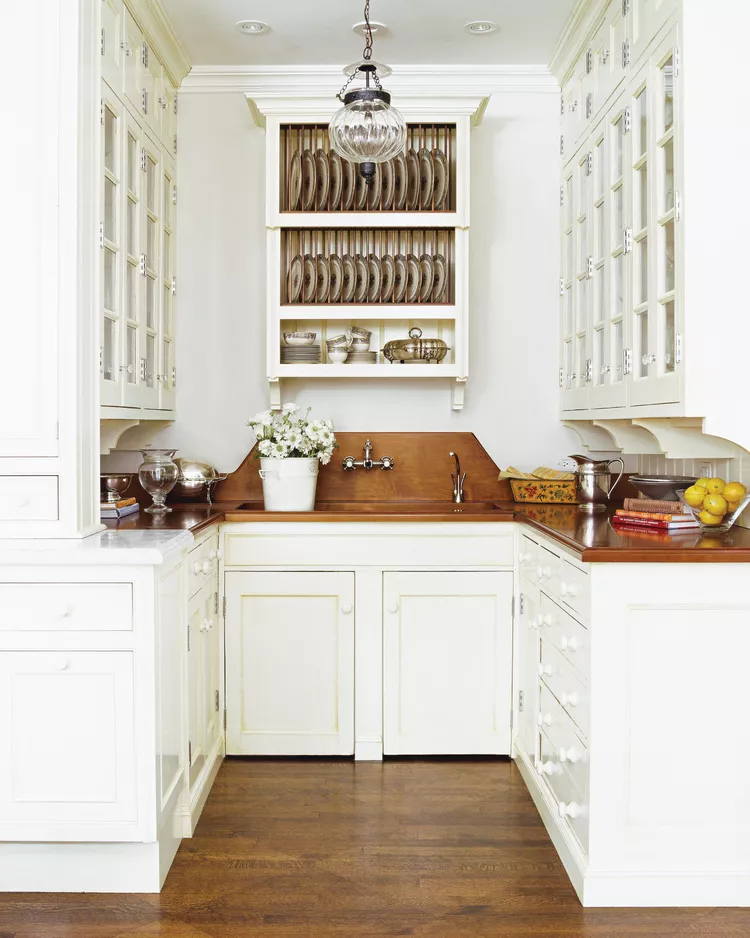In today’s open-concept homes, the kitchen often serves not only as a space for cooking but also as the social hub where friends and family gather. Yet, anyone who has hosted a lively dinner party knows that cooking large meals can generate chaos—sizzling spills, lingering odors, and general clutter. Enter the “dirty kitchen,” a clever design twist that keeps your primary kitchen pristine while handling the messiest tasks behind the scenes.
At its core, a dirty kitchen is a secondary cooking area, discreetly tucked away from the main, visible space. As explained by interior design expert Brad Ramsey, this auxiliary room is intended for meal preparation, heavy-duty cleaning, and various cooking tasks that might disrupt the ambiance of your main kitchen. “It’s essentially a hidden workspace,” Ramsey notes, “where you can let the inevitable mess of cooking run its course without it ever spoiling the inviting character of your primary kitchen.”
Crystal Hackl, owner and principal designer at Eagle & Vine Interiors, likens the dirty kitchen to a functional extension that preserves the aesthetic integrity of your entertaining area. In her view, the hidden kitchen not only takes on the “dirty work” but also supports a smoother entertaining experience—ensuring that countertop appliances, sizzling pans, and even potent aromas remain confined to a space out of sight. This duality of purpose allows the main kitchen to serve as a flawless backdrop to social gatherings, reinforcing its role as the heart of your home.
The advantages of incorporating a dirty kitchen into a modern home are manifold. For avid hosts, it offers a seamless solution for large meal preparation: the dirty kitchen becomes the designated area for chopping, frying, and cleaning, while the main kitchen can remain spotless for mingling and dining. This separation is especially valuable in homes featuring open floor plans where the primary kitchen is the focal point of social interaction. By relegating the mess to a concealed area, the overall environment stays fresh and appealing—a benefit that designers and homeowners alike celebrate.
Beyond hosting, a dirty kitchen proves practical for everyday use. Families with young children, for example, often encounter kitchen mishaps during meal prep. A secondary space where kids can help without the risk of contaminating the main entertaining area is a godsend. Moreover, when catering professionals are called in for large events, the additional workspace allows them to operate without disturbing the flow of the household. The dirty kitchen functions as a utilitarian space built for efficiency, absorbing the wear and tear of daily use to protect the more delicate surfaces and finishes of the main kitchen—an important consideration for homeowners who have invested in luxury materials that are more challenging to maintain.
It is worth drawing a distinction between the dirty kitchen and another popular design element: the butler’s pantry. Although both spaces provide additional functionality beyond the traditional kitchen layout, they serve distinctly different purposes. According to Ramsey, a butler’s pantry is primarily focused on organization and storage. It is designed to house fine china, glassware, and other serving essentials while offering a staging area for meals and even functioning as an informal bar. In contrast, the dirty kitchen is geared toward intensive cooking tasks and rigorous clean-up. Positioned adjacent to or behind the main kitchen and often hidden from view, the dirty kitchen is built to handle heavy-duty food prep and can tolerate a degree of disorder that the elegant butler’s pantry simply cannot.

Before embracing the concept of a dirty kitchen, however, homeowners must be mindful of several practical considerations. Space is often the most significant constraint. In many homes, carving out a separate area for another kitchen requires thoughtful planning and sometimes a compromise on the size of the primary kitchen. “It’s about finding the right balance,” says Hackl. “You want to maintain the functionality of your main kitchen while creating a dedicated space to handle the inevitable mess.”
Budgetary concerns also come into play. Adding a secondary kitchen entails duplicating certain features found in the primary space, such as a sink, dishwasher, cooktop, and sometimes even a separate refrigerator. Additionally, integrating proper ventilation and extending plumbing or gas lines can drive up the overall cost. Beyond the initial setup, homeowners should be prepared for the impact on utility bills, as an extra kitchen will naturally consume additional energy and water.
For some homeowners, the solution may lie in a more robust pantry instead of a full-fledged secondary kitchen. A well-planned pantry that accommodates a breakfast or coffee station might be enough for smaller households or those who cook less frequently. Yet for those who often entertain or require the extra workspace for daily meal prep, investing in a dedicated dirty kitchen can be a game-changer.
Ultimately, the decision to incorporate a dirty kitchen should be aligned with your lifestyle and usage patterns. For those who relish hosting grand dinner parties, managing large-scale meal preparations, or simply desire a pristine main kitchen that doubles as a social centerpiece, the dirty kitchen offers both aesthetic and functional benefits. Conversely, if your cooking needs are modest and your available space is limited, a comprehensive pantry may suffice.
In summary, the modern dirty kitchen is a smart, stylish twist on traditional culinary design. It allows homeowners to segregate the messy realities of cooking from the visual appeal of their primary kitchen, ensuring that both functionality and elegance coexist. Whether you’re a dedicated host, a busy family, or someone who values a spotless living environment, this innovative approach to kitchen design provides a practical solution that enhances both daily convenience and the overall ambiance of your home.

